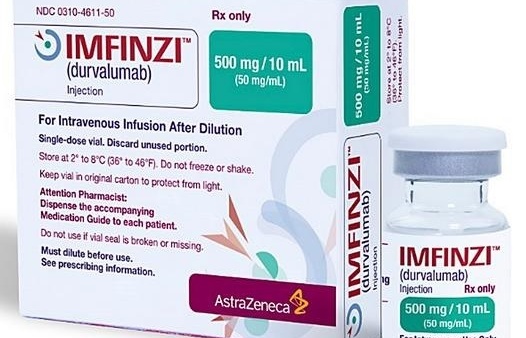PwC, CIO and CSO Global State of Information Security® Survey 2015 released

Detected security incidents have increased 66 per cent year-over-year since 2009, the survey data indicates.
“It’s not surprising that reported security breach incidents and the associated financial impact continue to rise year-over-year,” said David Burg, PwC’s Global and US Advisory Cybersecurity leader.
“However, the actual magnitude of these breaches is much higher when considering the nature of detection and reporting of these incidents,” he added.
As security incidents become more frequent, the associated costs of managing and mitigating breaches are also increasing. Globally, the estimated reported average financial loss from cybersecurity incidents was $2.7 million – a 34 per cent increase over 2013.
Big losses have been more common this year as organisations reporting financial hits in excess of $20 million nearly doubled.
But despite elevated concerns, the survey found that global information security budgets actually decreased four per cent compared with 2013. Security spending as a percentage of IT budget has remained stalled at 4 per cent or less for the past five years.
“Strategic security spending demands that businesses identify and invest in cybersecurity practices that are most relevant to today’s advanced attacks,” explained Mark Lobel, PwC Advisory principal focused on information security. “It’s critical to fund processes that fully integrate predictive, preventive, detective and incident-response capabilities to minimise the impact of these incidents.”
Organisations of all sizes and industries are aware of the serious risks involved with cybersecurity; however, larger companies detect more incidents.
Large organisations – with gross annual revenues of $1 billion or more – detected 44 per cent more incidents this year. Medium-sized organisations – with revenues of $100 million to $1 billion – witnessed a 64 per cent increase in the number of incidents detected. And while risk has become universal, the survey found that financial losses also vary widely by organisational size.
“Large companies have been more likely targets for threat actors since they offer more valuable information, and thus detect more incidents,” said Bob Bragdon, publisher of CSO.
“However, as large companies implement more effective security measures, threat actors are increasing their assaults on middle-tier companies. Unfortunately, these organisations may not yet have security practices in place to match the efficiency of large companies,” he noted.
Other finding is that insiders have become the most-cited culprits of cybercrime – but in many cases, they unwittingly compromise data through loss of mobile devices or targeted phishing schemes.
Respondents said incidents caused by current employees increased 10 per cent, while those attributed to current and former service providers, consultants and contractors rose 15 per cent and 17 per cent, respectively.
“Many organisations often handle the consequences of insider cybercrime internally instead of involving law enforcement or legal charges. In doing so, they may leave other organisations vulnerable if they hire these employees in the future,” added Bragdon.
Meanwhile, high profile attacks by nation-states, organised crime and competitors are among the least frequent incidents, yet the fastest-growing cyber threats. This year, respondents who reported a cyber-attack by nation-states increased 86 per cent – and those incidents are also most likely under-reported.
The survey also found a striking 64 per cent increase in security incidents attributed to competitors, some of whom may be backed by nation-states.
Effective security awareness requires top-down commitment and communication, a tactic that the survey finds is often lacking across organisations. Only 49 per cent of respondents say their organisation has a cross-organisational team that regularly convenes to discuss, coordinate, and communicate information security issues.
PwC notes that it is critical for companies to focus on rapid detection of security intrusions and to have an effective, timely response. Given today’s interconnected business ecosystem, it is just as important to establish policies and processes regarding third parties that interact with the business.
“Cyber risks will never be completely eliminated, and with the rising tide of cybercrime, organisations must remain vigilant and agile in the face of a constantly evolving landscape,” said PwC’s Burg.
“Organisations must shift from security that focuses on prevention and controls, to a risk-based approach that prioritises an organisation’s most valuable assets and its most relevant threats. Investing in robust internal security awareness policies and processes will be critical to the ongoing success of any organisation,” he underscored.
The Global State of Information Security® Survey 2015 is a worldwide study by PwC, CIO and CSO. It was conducted online from March 27, 2014 to May 25, 2014.
Readers of CIO and CSO and clients of PwC from around the globe were invited via e-mail to take the survey. The results discussed in this report are based on responses of more than 9,700 CEOs, CFOs, CIOs, CISOs, CSOs, VPs, and directors of IT and security practices from more than 154 countries.
What the stars mean:
★ Poor ★ ★ Promising ★★★ Good ★★★★ Very good ★★★★★ Exceptional
Latest News
More News
- Localities on first step towards training microchip labour force (April 25, 2024 | 13:00)
- Agricultural produce seeks to conquer e-commerce market (April 25, 2024 | 10:15)
- Hai Long Construction's successful 25-year journey (April 25, 2024 | 08:00)
- E-commerce platforms help to spread agricultural value (April 25, 2024 | 07:30)
- Standard Chartered revises down Vietnam's 2024 GDP growth forecast to 6 per cent (April 24, 2024 | 15:04)
- Vincom Retail retains brand name following Vingroup divestment (April 24, 2024 | 15:00)
- Veterinary drugmakers seek time and cost-saving policies (April 24, 2024 | 11:36)
- Crucial small business arena to receive reduced CIT boost (April 24, 2024 | 11:12)
- Gaw Capital bets on “China plus one” opportunities in Vietnam (April 24, 2024 | 09:00)
- Softening demand to limit 2024 trade (April 24, 2024 | 08:00)
















 Mobile Version
Mobile Version